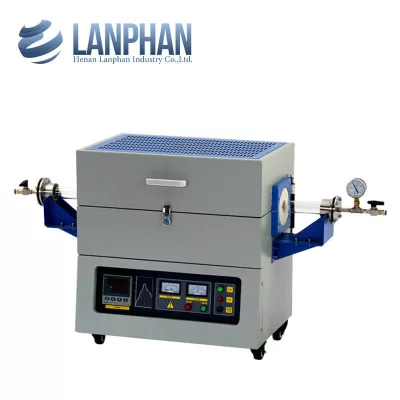In today’s scientific laboratories and industrial settings, high-temperature heating experiments are commonplace. To precisely control temperature in research and production, scientists and engineers widely employ a device known as the Muffle Furnace. This article will introduce the basic construction, operating principles, application fields, and the crucial role it plays in laboratory work.
Basic Construction of Muffle Furnace
A Muffle Furnace typically consists of two main components: the heating chamber and the insulating shell. The heating chamber is the container for experimental samples, usually made of high-temperature corrosion-resistant materials such as ceramics or metals. These materials can withstand extremely high temperatures while maintaining chemical stability. The insulating shell surrounds the heating chamber to prevent heat loss and ensure safe operation.
Operating Principles
The working principle of a Muffle Furnace is relatively simple yet highly efficient. It includes an electric heating element, a temperature sensor, and a temperature control system. The electric heating element is responsible for heating the samples within the heating chamber, while the temperature sensor monitors the temperature inside the chamber. The temperature control system adjusts the power to the heating element precisely based on the sensor’s feedback to maintain the desired temperature.
Temperature Control and Precision
One of the key advantages of the Muffle Furnace is its excellent temperature control and precision. It can operate within different temperature ranges, typically ranging from hundreds of degrees Celsius to thousands of degrees Celsius. Temperature control can achieve high levels of accuracy, allowing precise temperature control during experiments. This is crucial for fields that require experiments to be conducted at specific temperatures.
Application Fields
The Muffle Furnace finds extensive applications across various fields. In chemical experiments, it is commonly used for applications like ashing analysis, crucible tests, and sample incineration. In materials science, it is employed for sintering, heat treatment, and crystal growth. In metallurgy, the Muffle Furnace is an indispensable tool for metal smelting and ore processing. Furthermore, it plays a crucial role in biology, soil analysis, petrochemicals, and many other fields.
Advantages of Muffle Furnace
Compared to other heating devices, the Muffle Furnace offers several notable advantages. Firstly, it provides high-temperature stability, maintaining a stable temperature over extended periods. Secondly, temperature control is highly precise, allowing scientists to conduct highly accurate experiments. Additionally, Muffle Furnaces typically exhibit chemical inertness, meaning they do not react with samples, which is crucial for certain experiments.
Conclusion
In conclusion, the Muffle Furnace is an indispensable device in the laboratory, widely used for high-temperature experiments across various fields. Its outstanding temperature control and precision make it a reliable partner for scientists and engineers in research and production. Whether in chemistry, materials science, metallurgy, or other scientific domains, the Muffle Furnace plays an irreplaceable and pivotal role, driving scientific advancements and technological progress.

